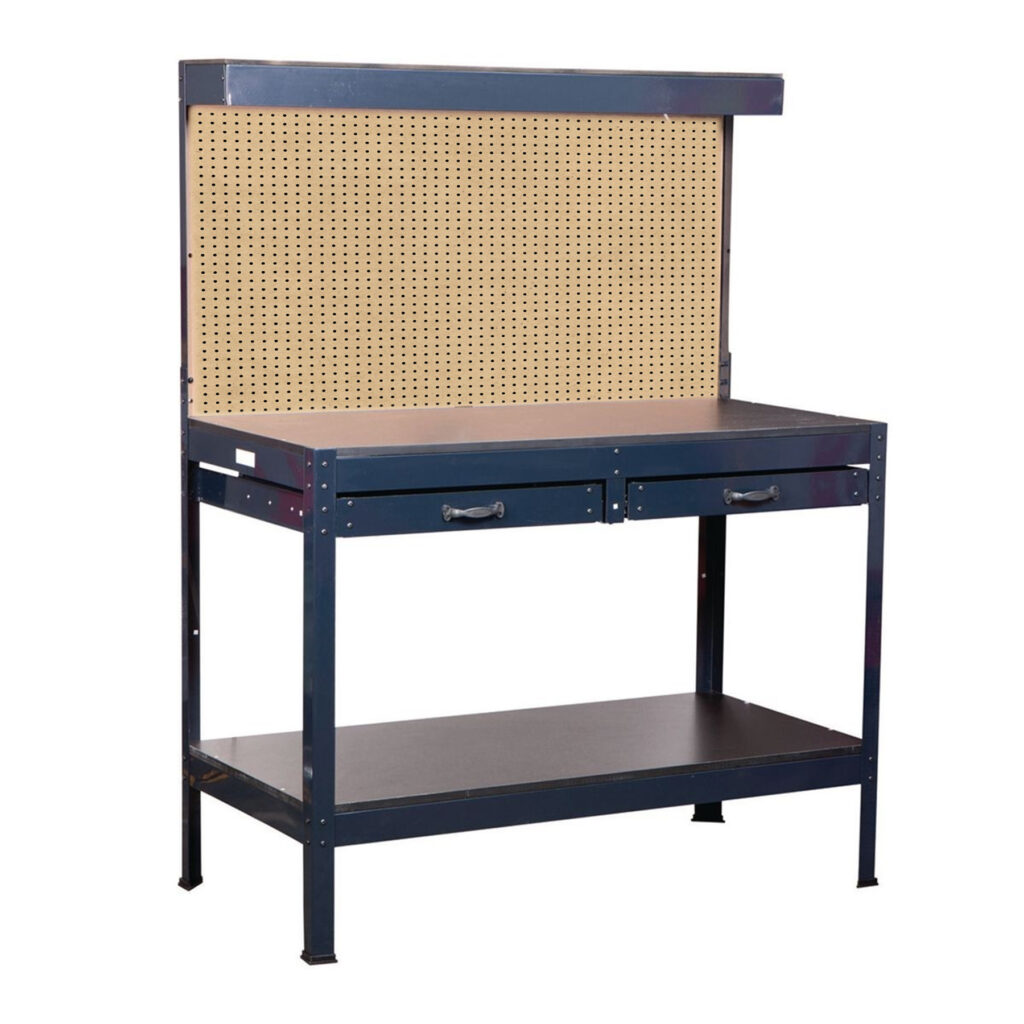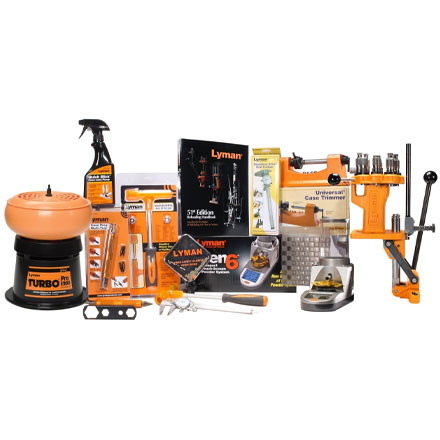
When I decided to start reloading, I immediately thought of buying a 4′ x 8′ piece of 3/4″ plywood, some 2′ x 4’s and building the work bench I’d always dreamed of. You know, grinder, bench vice, reloading equipment – the works. But reality set in; I didn’t have the time or the space. I found a U.S. General® 48″ Workbench at Harbor Freight that perfectly fit a corner space in my garage and fit my reloading needs better than expected. I use the tabletop for reloading or other projects. There is an upper shelf that is perfect for storing individual die sets, gunpowder, primers and bullets. Another shelf below is where I store spent brass sorted into plastic containers I bought at Walmart.

You can find deals on inexpensive benches like this one from Harbor Freight Tools
The workbench issue resolved, I set about to buy some reloading equipment. As a kid I had ventured into some reloading with a cousin who was my hunting buddy. Between us we had a couple of shotguns, a 32.20 rifle and a .38 special revolver. We used hand tools to cast some lead bullets, punch out and install new primers, load and crimp bullets and fill and crimp our shotgun shells. It was so much work, with such disappointing results, we did very little of it. Fast forward 40 something years and I was coming into this reloading venture clueless.
I knew a press would be needed if I hoped to move beyond loading by hand, but there were so many choices it was overwhelming. Fortunately, I had a friend to guide me and his advice saved me a ton of time and money. Examining the presses available, I was naturally drawn to the idea of a multi-stage or progressive press that would do practically everything automatically and turn out a bunch of ammo. My friend suggested, “Since you only plan to load handgun ammo at first and don’t have a whole lot of brass, a single-stage press is the right way to go.” That was great advice because here I am seven or eight years down the road and the original press is still meeting my reloading needs. It is also proving useful in teaching my sons and grandsons who have shown an interest in reloading. Besides, prices on the multi-stage presses helped make the decision easy.
Among suppliers of reloading equipment are well-known names such as Frankford Arsenal, Lee Precision, Lyman, Hodgdon, Hornady, Lee and RCBS. Most of them offer kits which is an excellent way to get started. All the basics in one package. Lee Precision was the most affordable and my buddy used their equipment and was happy with it. You can find most all these supplies at www.midsouthshooterssupply.com
My original setup came with the press, a powder scale, a powder measure, funnel, a cutter and lock stud to trim cases, an inside/outside case mouth chamber tool and one Breech Lock Quick Change Bushing used to make die changing simple and quick. Checking around, you can buy completed reloading kits. I think you’d be pleased with this setup, but depending upon your needs, you can get similar kits in all forms and fashions.
Before you can use the press, you’ll need a die set for each caliber. Lee Precision die sets are my go to. Pistol calibers are offered as 3-die sets and 4-die sets, the difference being a crimp die. I’ve loaded a bunch of pistol caliber cartridges without crimping, but somewhere along the way I found the need to add a crimping die for 9mm, .40 S&W and .45 ACP, so I suggest you go ahead and spend the extra money to get the 4 die set. You definitely need to crimp magnum revolver cartridges to prevent bullet slip from locking up your revolver during firing.
This Lyman Ultimate Reloading System Kit is a good way to get started!
A setup such as I have described here will get you in business and may be all you’ll ever need for your own reloading projects. It certainly works for me. Everything you buy for reloading will have instructions designed to educate you and keep you out of trouble. If you customarily forge ahead without reading instructions, don’t do it here. Hide while you read them if you must, but read the instructions and have fun!









